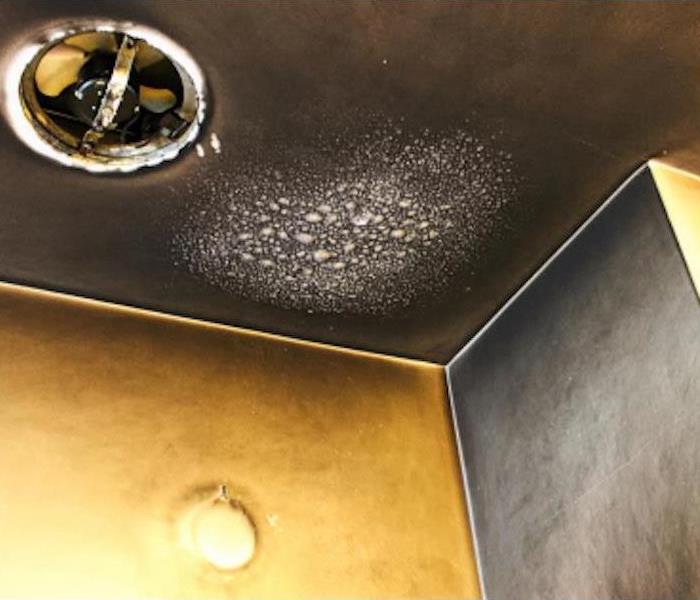What Does Soot and Smoke Damage Look Like After a Fire?
12/19/2023 (Permalink)
A fire is one of the most damaging events that could happen in your home or business. Though the flames can cause devastation, soot and smoke are equally problematic. Fortunately, fire damage restoration in Hingham can alleviate the lingering effects of a fire.
But what does smoke damage look like? If you've never seen the aftermath of a fire, you might be unsure about the particular characteristics of smoke-damaged surfaces.
At SERVPRO of Weymouth, Hingham and Quincy, our restoration experts have years of experience identifying signs of smoke damage that might be less obvious to a property owner. If you want to learn to recognize common visual indicators of smoke impact, continue reading. We also address how restoration professionals mitigate smoke and soot damage below.
Why Is Soot and Smoke Damage Dangerous?
Smoke damage refers to any damage that follows a fire that the flames don't cause directly. Though smoke doesn't affect materials the same way a fire does, it can still leave behind greasy, smudgy soot. Because smoke and soot particles travel through the air, they can get onto surfaces in spaces without fire damage.
Though they don't seem dangerous, smoke and soot can be more problematic than the fire's flames. Soot particulate isn't visible to the naked eye, so you could breathe in particles unknowingly. It primarily consists of carbon but can contain chemicals, dust, and metals.
Smoke and soot can damage almost any material inside your home or business, such as glass, metal, fabrics, flooring, and marble. Their presence creates foul odors, poor indoor air quality, and health complications.
You can get smoke and soot particles inside your body by breathing inside a fire-damage building without a respirator. Particles can also enter your mouth and eyes. Unfortunately, these toxic particles can cause several problems and symptoms like:
- Chest pain
- Eye irritation
- Cough
- Headaches
- Elevated heartbeat
- Wheezing
- Asthma attack
- Severe skin irritation
Recognizing Smoke Damage Appearances on Surfaces and Materials
What does smoke damage look like? When describing the look of smoke damage, it helps to know about the different types of damage and their characteristics.
Dry Smoke
Dry smoke derives from fast-burning materials like wood and paper. Since the heat is higher when these materials burn, smoke rises quickly.
The residue from dry smoke tends to be dry and powdery. It's easier to wipe clean than other fire damage types. However, its powdery nature also means dry smoke residue can easily slip into holes and crevices, which makes getting rid of the smoky smell more challenging.
Wet Smoke
When rubber or plastic burns at a smoldering heat, it produces wet smoke. Wet smoke is thick and sticky, creating a pungent scent wherever it is.
If you touch wet smoke residue, it will smear on the surface. Its stickiness makes cleaning wet smoke a difficult job requiring lots of time and effort.
Fuel Smoke
Fuel smoke develops when a fire burns oil, petroleum, or similar substances. You're not likely to experience this type of smoke damage inside a home or business. Garages, warehouses, and other spaces that often store petroleum are more likely to experience fuel smoke damage.
The smell of fuel smoke is one of the worst, and the residue is notoriously hard to clean. The smoke remnants are thick, sticky, and almost impossible to remove without professional help.
Protein Smoke
When organic materials burn, they produce protein smoke. This smoke damage is common for kitchen fires. It's mostly invisible, but protein smoke can cause paint discoloration and a lingering smoky scent.
What Should You Do About Smoke and Soot Damage?
Because soot and smoke particles are black, microscopic, and toxic, it's best not to attempt cleaning damaged surfaces yourself. It's better to contact a qualified fire damage restoration company.
Restoration experts know how to identify all the visual clues for smoke damage assessments that determine the extent and severity of the problem. After assessing the property, the restoration crew will create and execute a deep cleaning plan to scrub the entire property of smoke. They have the skills and tools to clean and restore smoke-damaged items safely.
Contact the Experts
You don't have to know the answer to, "What does smoke damage look like?" to understand that SERVPRO of Weymouth, Hingham and Quincy is here to meet your damage restoration needs. Our full-service company offers water, fire, and storm damage restoration, including services for smoke and soot mitigation. Our highly trained technicians use advanced equipment and the latest industry techniques to quickly restore buildings after a disaster.
Call SERVPRO of Weymouth, Hingham and Quincy in Massachusetts today at (781) 337-0344 for assistance.






 24/7 Emergency Service
24/7 Emergency Service
